Green Energy investment will be significant driver of nickel prices in years ahead

By David Duval
Last year could only be described as a turbulent period for the nickel market with the COVID-19 pandemic influencing the price from January 2020 onwards. Throughout the course of the year, the price remained volatile, dropping to $11,000/t in the second half of March and then rallying to as much as $16,000/t by mid-November.
The rebound in nickel prices was primarily the result of the economic recovery in China which produced demand-based increases in nickel ore prices. Also contributing to the price rise was the nickel export ban in Indonesia and Covid-related disruptions in the Philippines, another major supplier. General macroeconomic trends favouring commodities due to low interest rates, liquidity injections and a weaker US dollar also contributed to the strengthening of LME nickel prices.
A Chinese stimulus package, based on a CNY 3.6 trillion ($500bn) increase in the budget deficit, facilitated the nation’s economic recovery. Not only did the package significantly influence the stainless steel recovery, it boosted investments in stainless-intensive real estate and infrastructure projects.
While the sale of electric vehicles declined 6% globally in the second quarter of 2020, EV sales in China increased 123% over the same period. However, demand for nickel in other applications remained subdued with aerospace manufacturing plant closures leading to reduced demand in super alloy applications. In addition, continuing poor results for the automotive market negatively impacted plating applications.
Indonesia, the world’s largest nickel ore producing country, has banned exports of the commodity since January 2021. This represents an effort by the government to push miners to develop smelters and refine the metal ore domestically so the country can export higher-value products. Indonesia imposed the ban under Law No.3/2020 meaning that nickel must be processed in Indonesia’s smelters before being sold overseas.
With the Indonesian export ban in full effect, Chinese producers now have a greater reliance on ore imports from other countries, particularly from the Philippines. As such, the Philippine port closures in April, which resulted from a COVID-19 outbreak, amplified the supply impact and caused ore imports to decline to a multi-year low. Producing operations in South Africa, Madagascar, Canada, Colombia and Australia have also been impacted. In addition to the impact on existing nickel operations, project delays have also been observed owing to the restriction on the movement of people.
Looking to the future, the industry is continuing to monitor the progress of HPAL (High Pressure Acid Leach) projects in Indonesia which are expected to supply the EV market by producing a battery-suitable nickel material. However, HPAL operations so far have been delayed due to complexity, costs, and the COVID-19 related pandemic that has restricted travel for technical experts. On the other hand, Nickel Pig Iron (NPI) production from Indonesia continues to grow and is expected to offset any Chinese NPI reductions.
Globally, governments are implementing fiscal packages that appear to be specifically supporting and targeting the growth of the “green economy” which is certain to increase nickel demand. For instance, 25% of the European Commission’s eight-year, €1.85 trillion, economic recovery proposal is allocated to green-related initiatives. This will undoubtedly lead to increased incentives to purchase electric vehicles many of which will be using nickel-rich batteries.
Long term demand growth for nickel will come from the battery sector, driven by government legislation and incentives. Europe is currently building up its own battery eco-system and will more than likely become the new centre of growth based on high-nickel chemistries.
Russia’s Norilsk Nickel believes that market players “who first secure the most reliable and responsibly sourced nickel supply in terms of quality stability and implement synergy integration, will have a competitive advantage and a platform for future growth along with the promising battery market.”
“However, some market participants suggest that the current price levels might not be quite justified by the fundamentals given the market surplus, negative SHFE/LME arbitrage, fragile consumer demand in stainless outside China and Indonesia, weakness of non-stainless sectors as well as unclear prospects of the economic recovery and further lockdowns reflecting the resurgence of the COVID pandemic. On the other side, stimulus packages across the globe are expected to boost the development of green economy and battery demand. This could keep all EV-related asset prices including nickel, elevated by sticky investment flows,” Norilsk predicts.
As part of its 14th Five Year Plan, China is looking to increase its self-reliance, with domestically- produced metals being a significant beneficiary. Overseas investment in mining and metal resources will continue to guarantee the supply of critical materials and this could include investment in Greenfields projects and/or M&A activity. It’s highly likely that some of this investment activity will be directed at Canadian companies.
According to CRU Group, a privately owned business intelligence company, China’s new Five Year plan will see “increased focus on green living and high-quality growth. The aspiration is to achieve this through greater self-reliance and technological innovation. Smarter use of investment and regional supply chains will allow Chinese industry to move up the value chain.”
Renforth Resources Inc. [RFR-CSE; RFHRF-OTCQB; 9RR-FSE] is a Canadian junior resource company that is aiming to prove once again that the best place to find new mineral discoveries is in the vicinity of existing mines.
The Toronto-based company is testing that theory after assembling a portfolio of properties that are located in historic Canadian mining camps in Ontario and Quebec.
Renforth has ~$6 million in cash and securities on hand and full ownership of several properties, including the flagship Parbec property, a bulk tonnage gold project located in Malartic, Quebec, situated beside the Canadian Malartic open pit gold mine. Held jointly by Agnico Eagle Mines Ltd. [AEM-TSX, NYSE] and Yamana Gold Inc. [YRI-TSX;Â AUY-NYSE], the Canadian Malartic mine ranks as Canada’s largest gold mine.
Renforth President and CEO, Nicole Brewster, is focused on the development of the Parbec Project which has open pit NI 43-101 compliant resources.
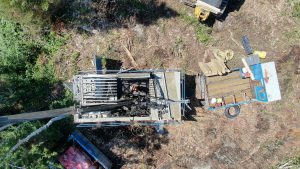 According to a May, 2020 estimate, Parbec contains an Indicated Resource of 104,500 ounces of gold in 1.82 million tonnes at an average grade of 1.78 g/t gold, and an Inferred Resource of 177,300 ounces of gold in 3.12 million tonnes at an average grade of 1.77 g/t gold.
According to a May, 2020 estimate, Parbec contains an Indicated Resource of 104,500 ounces of gold in 1.82 million tonnes at an average grade of 1.78 g/t gold, and an Inferred Resource of 177,300 ounces of gold in 3.12 million tonnes at an average grade of 1.77 g/t gold.
The company launched a 15,000-metre drill program in Fall 2020 with the aim of adding ounces to the May, 2020, estimate. With 9,600 metres of drilling completed in 2020 the program, which includes infill drilling within the modelled mineralized zones, on strike and down dip and step-outs down dip to test Parbec’s depth potential, will re-commence soon.
The latest drill results at Parbec include hole PAR-20-112 that returned 5.57 g/t gold over 21.45 metres (254.8 to 276.25 metres), including 37.3 g/t gold over 1 metre (264.9-265.9 metres). PAR-20-104a assayed 1.72 g/t gold over 13 metres, within the sediments south of the Cadillac Break, forming a new area of mineralization deserving future follow-up. Results have only been released for 11 of the Fall 2020 drill holes, each of which returned gold values, 20 holes remain to be received and reported on.

At a time when the prices of gold and copper are expected to rise, any success at the drill bit level would likely have a positive impact on the shares of Renforth, which were trading on March 16, 2021 at $0.07 in a 52-week range of $0.02 and $0.09, leaving the junior with a market cap of $17.85 million based on 255 million shares outstanding.
Renforth’s Surimeau District Property, 215 km2 and adjoining the Canadian Malartic Mine, is the consolidation of five historic mineralized prospects into one for the first time. Historically investigated only for gold, which is present, Surimeau was discovered by Renforth to host sulphide nickel rich VMS mineralization in several locations, as evidenced in historic, and Renforth’s, surface sampling and drilling. Renforth will shortly be commencing a drill program at the Victoria West prospect, an area of ~5km of mineralized strike in the western end of a 20km geological feature, which is also mineralized at its eastern end and untested in between. The program is designed to test ~3km of strike with modern, deeper holes, to test the nickel rich VMS, which in addition to nickel carries copper, zinc and several other minerals.
Renforth also holds the Malartic West, the site of a copper/silver discovery outlined on surface, with future exploration planned.
In addition, Renforth has optioned the wholly-owned Denain-Pershing gold-bearing property, located near Louvicourt, Quebec, to Q3 Mining Inc. [OIII-TSXV].
In Ontario, Renforth holds the Nixon-Bartleman property, which straddles the famous Destor-Porcupine Fault and hosts over 500 metres of exposed gold in quartz mineralization. Located west of Timmins, approximately 10km SW of, and on strike to, the Timmins West and Bell Creek mines of Pan American Silver [PAAS-TSX, NASDAQ] the project has been the venue for significant historical work, but no previous attempts to calculate a resource.
Renforth Resources has ~$6 million in cash and securities on hand and is using it to complete the remaining ~6,000m of drilling at Parbec, a Q2 resource estimate update at Parbec, and programs at each of Surimeau, Nixon-Bartleman and Malartic West
 Midland Exploration Inc. [MD-TSXV] is a dynamic and aggressive mineral exploration with a focus on gold, base metals, and platinum group metals discoveries in Quebec.
Midland Exploration Inc. [MD-TSXV] is a dynamic and aggressive mineral exploration with a focus on gold, base metals, and platinum group metals discoveries in Quebec.
The company is led by a highly respected management team and has joint venture agreements on a basket of different projects with major companies like BHP Billiton Canada Inc. [BHP-NYSE], Probe Metals Inc. [PRB-TSXV], Agnico-Eagle Mines Ltd. [AEM-TSX, NYSE], Wallbridge Mining Co. Ltd. [WM-TSX, WC7-FWB], Osisko Development Corp. [ODV-TSXV], SOQUEM Inc., Nunavik Mineral Exploration Fund and Abcourt Mines Inc. [ABI-TSXV].
Key shareholders include BHP Canada Inc., which holds a 5% interest in the company.
Gino Roger, the company’s President and CEO since 2006, was a former geologist with Xstrata, Falconbridge and Noranda. He has been involved in the generation, acquisition and negotiation of many significant projects and the discovery of mineral deposits.
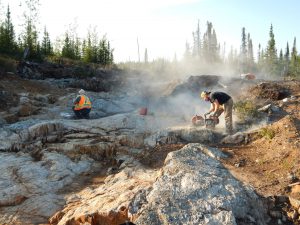 Midland is well funded with $12.5 million in the treasury and after recently raising $2.38 million from a non-brokered private placement financing and remains one of the most active prospect generators in Quebec, a politically stable jurisdiction with a long history of mining exploration and development.
Midland is well funded with $12.5 million in the treasury and after recently raising $2.38 million from a non-brokered private placement financing and remains one of the most active prospect generators in Quebec, a politically stable jurisdiction with a long history of mining exploration and development.
On February 23, 2021, Midland announced that it has added to its portfolio by acquiring an important strategic land position adjacent to Rio Tinto Exploration Canada Inc. in Grenville, north-central Quebec. The property is prospective for both nickel and copper.
This important strategic position, consists of 815 claims, and is located northeast of the town of La Tuque in the Maurice region. This is in addition to the 56 claims that Midland recently acquired from privately-owned Quebec company Les Ressources Tectonic Inc., bringing the total to 871 claims.
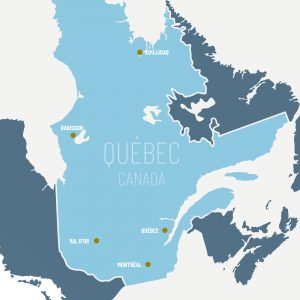 The claims which the company have acquired are divided into five main blocks, covering a surface area of approximately 510 km2 in mafic and ultramafic rocks of the La Bostonnais Complex, north of La Tuque.
The claims which the company have acquired are divided into five main blocks, covering a surface area of approximately 510 km2 in mafic and ultramafic rocks of the La Bostonnais Complex, north of La Tuque.
The largest claim block is located south of the former Lac Edouard mine, which historically produced 50,000 tonnes grading 1.50% nickel and 0.50% copper.
With this land position, Midland becomes one of the top two claimholders in this part of the Grenville. The other major landholder is Rio Tinto.
The announcement comes just three months after Midland acquired the Tete Nord property from Les Ressources Tectonic. Midland acquired a 100% interest in the property in exchange for three cash payments totalling $100,000 to Tectonic over a period of two years, including $30,000 upon execution of the agreement.
Compensation also includes a 2% net smelter return (NSR). Midland can reacquire each 1% tranche for $1.5 million.
The property hosts a few mineral occurrences, including the Savane showing, located approximately 25 kilometres south of the former Edouard mine. Savane consists of a nickel-copper showing discovered by prospecting in 1995 in a pyroxenite, where historical values of 1.80% nickel and 0.20% copper were reported in grab samples.
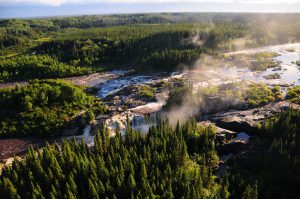 Calculated nickel tenors (grades normalized to 100% sulfides) at Savane average 3.5% nickel. Another grab sample from the sub-cropping boulder also yielded grades of 1.98% nickel and 0.46% copper in an area located about 250 kilometres north of the Savane showing. No historical drilling has been reported in this area.
Calculated nickel tenors (grades normalized to 100% sulfides) at Savane average 3.5% nickel. Another grab sample from the sub-cropping boulder also yielded grades of 1.98% nickel and 0.46% copper in an area located about 250 kilometres north of the Savane showing. No historical drilling has been reported in this area.
Midland announced also in August 2020 the execution for a new strategic alliance for the initial funding by BHP of a generative exploration phase and opportunities for joint contributions to advance nickel exploration within the Nunavik territory in northern Quebec.
The main objective of this Alliance is to identify, test and develop high-quality exploration targets towards the discovery of new significant nickel deposits within a large area of interest.
On March 16, 2021, Midland shares were trading at 88 cents in a 52-week range of $1.13 and $0.46, leaving the company with a market cap of $63.62 million, based on 72.3 million shares outstanding.
 Tartisan Nickel Corp. [TN:CSE; TTSRF:US0TC; A2D:FSE] is a Toronto-based mineral exploration and development company aiming to become a supplier of nickel sulphide to the electric vehicle and battery storage market.
Tartisan Nickel Corp. [TN:CSE; TTSRF:US0TC; A2D:FSE] is a Toronto-based mineral exploration and development company aiming to become a supplier of nickel sulphide to the electric vehicle and battery storage market.
Tartisan is actively moving to achieve their primary goal of putting their flagship asset, the Kenbridge Nickel Deposit into production. Tartisan believes the Kenbridge Deposit can be put into production quickly and at a modest capital cost compared to most other North American nickel plays.
Tartisan’s strategy is based on the understanding that a major advantage in using nickel in batteries is that nickel sulphide delivers higher energy density and thus greater storage capacity. Yet there are very few high-quality Low CAPEX development projects like the Kenbridge Nickel Deposit out there to meet the expected demand from electric vehicle manufacturers such as Tesla Motors Ltd. [TSLA:NASDAQ]. Tesla CEO Elon Musk recently told chief executives of major mining companies to “please produce more nickel.”
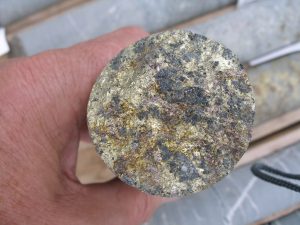 The Kenbridge property is 3,632.70 hectares and is located in the Kenora Mining District, Ontario. The Kenbridge Project benefits from good access to roads and power as well as proximity to other mines including New Gold Inc.’s [NGD-TSX, NYSE American] Rainy River gold mine.
The Kenbridge property is 3,632.70 hectares and is located in the Kenora Mining District, Ontario. The Kenbridge Project benefits from good access to roads and power as well as proximity to other mines including New Gold Inc.’s [NGD-TSX, NYSE American] Rainy River gold mine.
The Kenbridge Deposit already has a shaft to a depth of 622 metres with level stations at 45-metre intervals and two levels developed at 107 metres and 152 metres below the shaft collar. The deepest hole at Kenbridge extends to 838.4 metres and intersected mineralization grading 4.25% nickel and 1.38% copper over 10.7 metres. The Kenbridge Deposit remains open at depth.
The company has recently updated their Mineral Resource Estimate (MRE) and has announced that the Preliminary Economic Assessment (PEA) is being updated to determine if Kenbridge mineralization is extractable under current metal prices and exchange rates. Updating these two key reports are significant milestones for Tartisan Nickel Corp. as the world demand for Class 1 nickel sulphide increases exponentially.
 According to the recently updated Kenbridge MRE, the measured and indicated resources at Kenbridge stand at 7.5 million tonnes at 0.58% nickel for a total of 95 million pounds of contained nickel. On top of that is an inferred resource of 985,000 tonnes at 1.0% nickel and 0.62% copper or 22 million pounds of contained nickel.
According to the recently updated Kenbridge MRE, the measured and indicated resources at Kenbridge stand at 7.5 million tonnes at 0.58% nickel for a total of 95 million pounds of contained nickel. On top of that is an inferred resource of 985,000 tonnes at 1.0% nickel and 0.62% copper or 22 million pounds of contained nickel.
“The updated PEA will feature the potential economic viability of Kenbridge and will identify the critical next steps,” said Tartisan CEO Mark Appleby. “The Kenbridge Project is heading towards a production decision and we hope to commission a bankable feasibility study all things considered in 2021”.
When the company outlines future exploration plans for the Kenbridge Nickel Project, those plans are expected to include a surface exploration and definition drilling plan, in addition to geotechnical, metallurgical and environmental work.
As drilling has indicated that the deposit is open at depth, down plunge and along strike, Tartisan hopes to upgrade the indicated and inferred resources and test multiple exploration targets, such as the Kenbridge North target.
 Meanwhile, in a November, 2020 press release, Tartisan explained that SMX International Corp. has been retained to update the NI 43-101 Resource Report for the Sill Lake Lead-Silver Project. Sill Lake consists of 47 single cell mining claims, covering 933.57 hectares and is located in the Sault St. Marie, Ontario, Mining district. The project has seen two distinct periods of underground development and production. It is estimated that 7,000 tonnes of ore containing lead and silver were mined. In 2010, a historical NI 43-101 technical report gave a measured and indicated resource of 112,751 tonnes at 134 g/t silver; 0.62% lead and 0.21% zinc.
Meanwhile, in a November, 2020 press release, Tartisan explained that SMX International Corp. has been retained to update the NI 43-101 Resource Report for the Sill Lake Lead-Silver Project. Sill Lake consists of 47 single cell mining claims, covering 933.57 hectares and is located in the Sault St. Marie, Ontario, Mining district. The project has seen two distinct periods of underground development and production. It is estimated that 7,000 tonnes of ore containing lead and silver were mined. In 2010, a historical NI 43-101 technical report gave a measured and indicated resource of 112,751 tonnes at 134 g/t silver; 0.62% lead and 0.21% zinc.
Beside the Kenbridge Nickel Deposit, Tartisan’s portfolio includes the Sill Lake Lead-Silver Property in Sault St. Marie, Ontario and the Don Pancho Manganese-Zinc-Lead-Silver Project in south-central Peru.
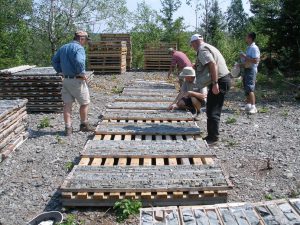 Tartisan owns two NSR’s and equity stakes in; Eloro Resources Ltd. [ELO-TSXV] which is exploring the Iska Iska Silver-Polymetallic Project in southern Bolivia and the La Victoria Gold-Silver property in north-central Peru. Class 1 Nickel & Technologies Limited [NICO-CSE], which owns the past-producing Kelex-Alexo class one nickel sulpide mine in Ontario and a nickel project in Quebec. Tartisan additionally owns a 12% plus stake in Peruvian Metals Corp. [PER-TSXV] an emerging toll milling enterprise in north-central Peru as well as Silver Bullet Mines Inc., which has commenced small scale silver production in Arizona.
Tartisan owns two NSR’s and equity stakes in; Eloro Resources Ltd. [ELO-TSXV] which is exploring the Iska Iska Silver-Polymetallic Project in southern Bolivia and the La Victoria Gold-Silver property in north-central Peru. Class 1 Nickel & Technologies Limited [NICO-CSE], which owns the past-producing Kelex-Alexo class one nickel sulpide mine in Ontario and a nickel project in Quebec. Tartisan additionally owns a 12% plus stake in Peruvian Metals Corp. [PER-TSXV] an emerging toll milling enterprise in north-central Peru as well as Silver Bullet Mines Inc., which has commenced small scale silver production in Arizona.
Tartisan intends to begin a normal course issuer bid (NCIB), under which it may purchase up to 5,246,456 of its common shares, representing approximately 5% of its issued and outstanding common shares. The company is commencing the NCIB because it believes the underlying value of the Kenbridge Nickel Project, along with its portfolio holdings, is not adequately reflected in the market price of its shares.
On March 16, 2021, Tartisan shares were trading at 48 cents and had a 52-week range of 56 cents and $0.05, leaving the company with market cap of $50 million approximately, based on 105 million shares issued and outstanding.

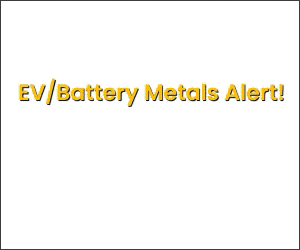

very informative